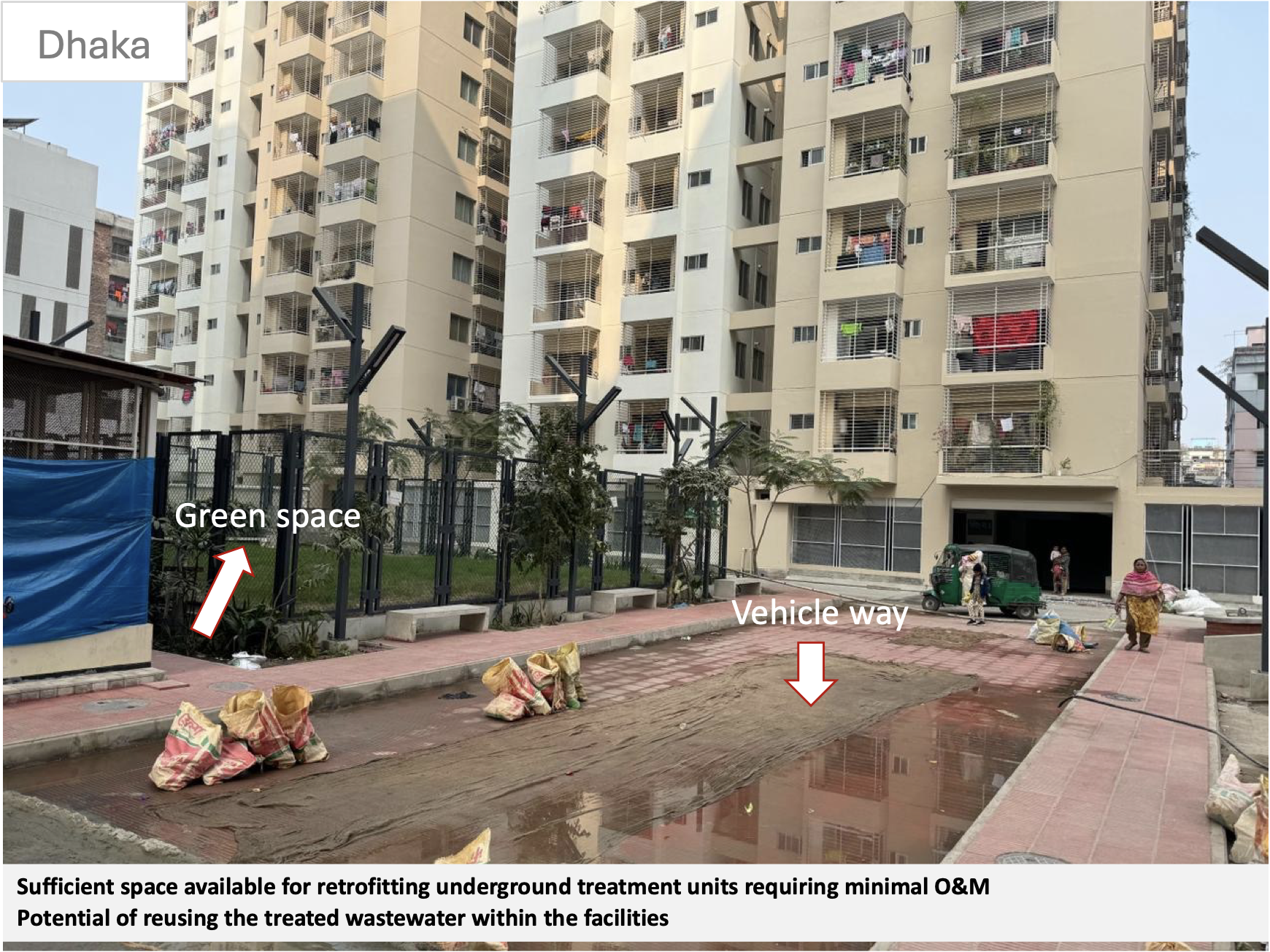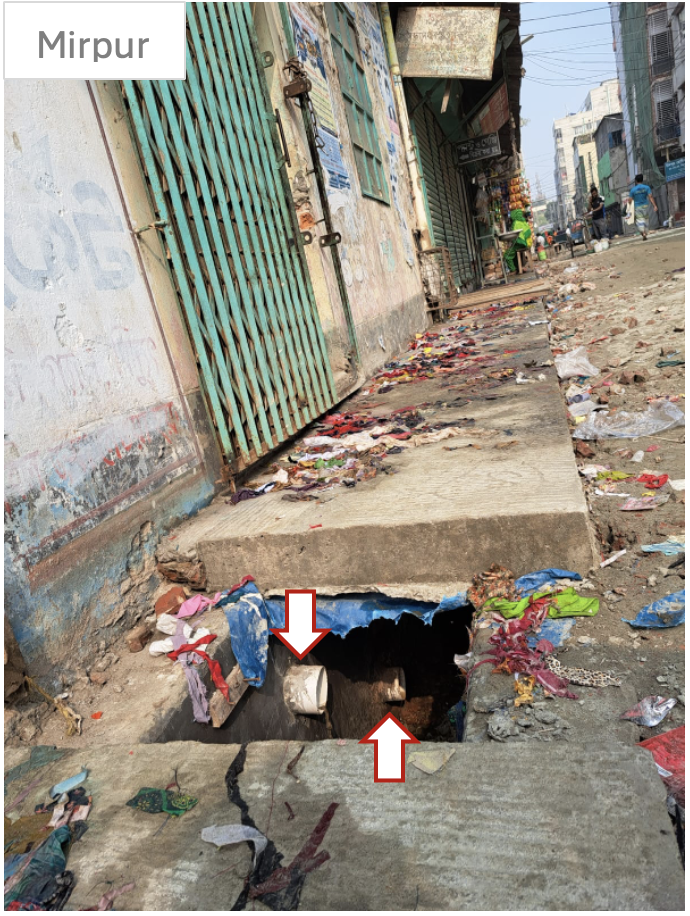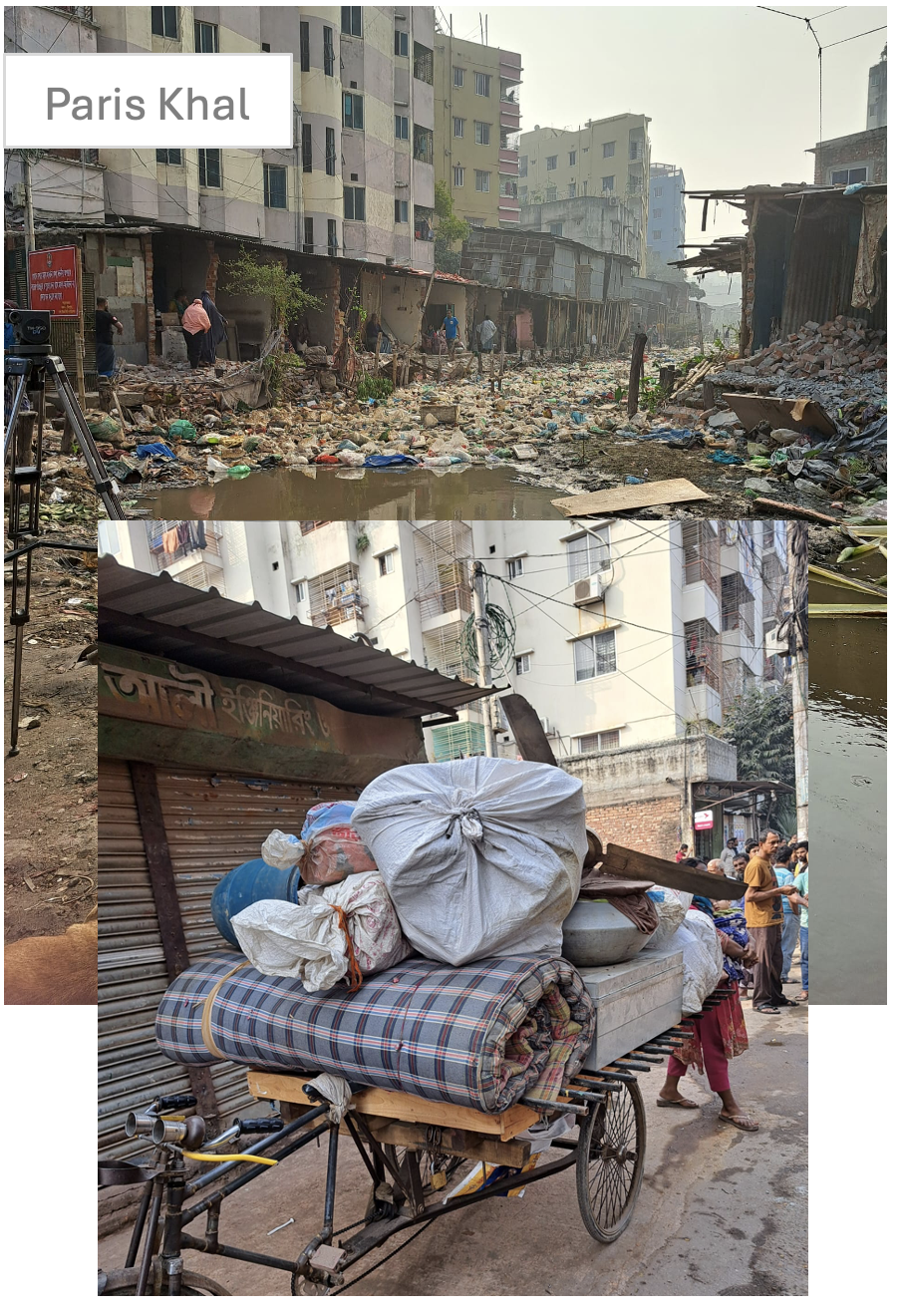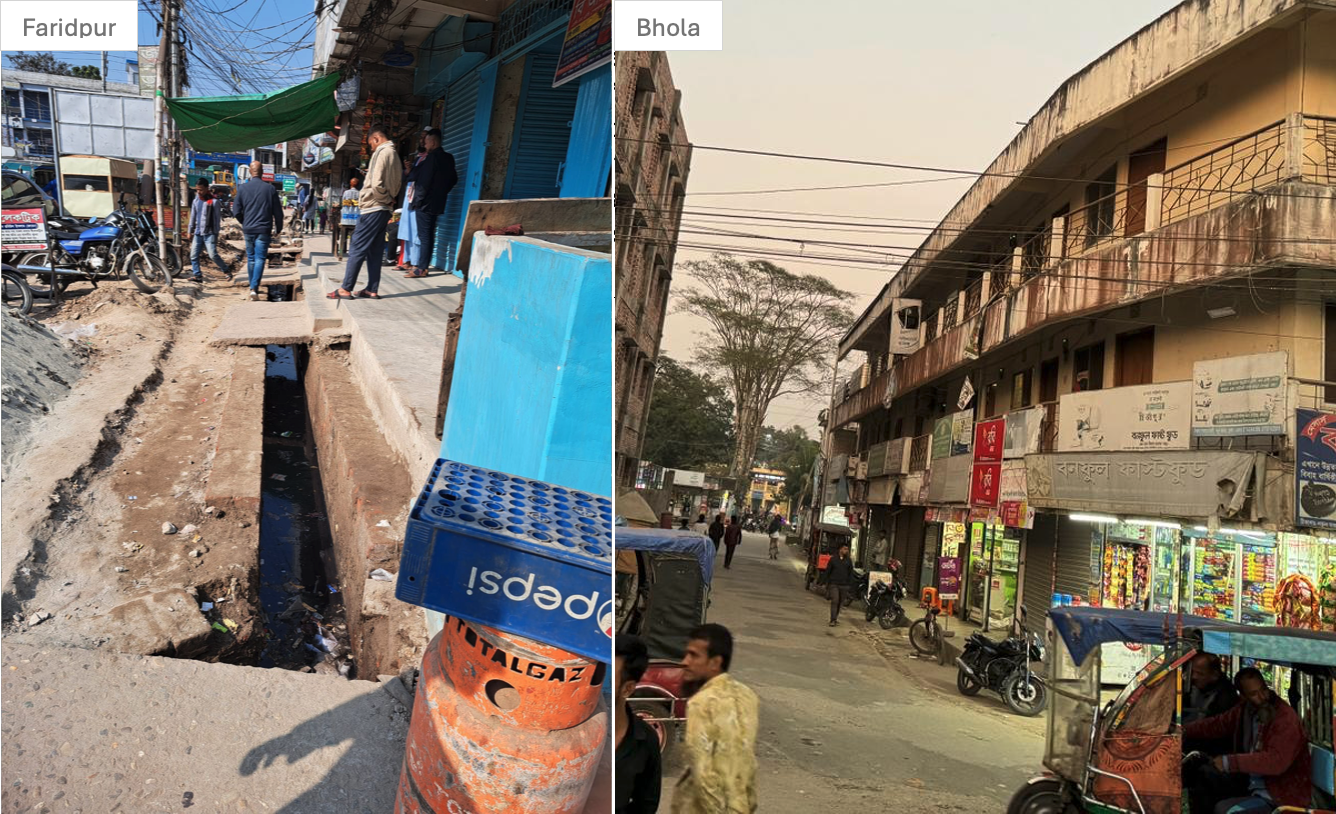Blog written by Isha Basyal.
Are 2 weeks enough to know a country, its practices, and its need, especially the sanitation needs? Despite having visited Dhaka eight times since 2011, it wasn’t until this recent trip, with days dedicated to intensive fieldwork, that I truly saw a different side of Dhaka beyond the bustling streets of Gulshan and Banani. This trip aimed to develop a sanitation improvement plan for specific zones within Dhaka North City and select secondary cities. As I moved around, it became even more apparent that sanitation presents a complex challenge, shaped by various factors such as solid waste management, public awareness, and government enforcement of laws and policies, to mention a few.

Of the many factors affecting sanitation is the availability of land for sanitation improvement and treatment facilities. This issue is prevalent globally, but it’s acutely felt in Bangladesh. Despite the congestion, it’s commendable how Dhaka city has managed to allocate limited green public spaces for its residents to utilize. However, a visible challenge for household-level sanitation is the lack of space within or between buildings, as well as the absence of usable public spaces in settlement areas for any localized sanitation improvement infrastructure. In other residential areas similar to high-rise apartments, there is significant potential in the abundance of common spaces that could be repurposed for installing treatment units. These areas could be repurposed to accommodate treatment units for processing effluent from containment systems and greywater before its discharge into the drainage network or for internal reuse within the complex. While surveying the city, it became apparent that the settlements could be categorized into broad typologies.
Settlement Typologies as per the sanitation practices in Dhaka

Cost of improper sanitation: Infrastructure

So, what do we see as the solution for the typologies we witnessed? Dhaka and its netizens know that sewer is the solution but in absence of an ongoing or an immediate network expansion plan the solution lays on non-sewered or decentralized solutions. However, the complexity is high when almost all its households are connecting their outlet to stormwater drainage. The storm drains aren’t meant for carrying sewage, but what would be the cost of asking the HHs to stop connecting their outlet to the storm-drains? Even if they had a containment unit, they don’t have enough space within their premises for any supplemental infrastructure for onsite sanitation improvement. How much would it cost to retrofit these faulty connections? Considering that for now the solution would be mostly non-sewered which is often considered as the responsibility of the HHs, how much additional financial burden would it be for the HHs? A study conducted in 2010 by Water and Sanitation Program (WSP) found that Bangladesh incurred a loss of Tk295.48 billion in 2010 due to inadequate sanitation, which is 6.3% of the GDP.⁽¹⁾
Complex challenges require innovative solutions. However, are we adequately prepared with both the readiness of innovative technologies and their wider acceptance?
Cost of improper sanitation: livelihood

On our way to a site visit, we encountered a sizable crowd gathered around the oldest Paris Khal, a canal famously for being choked with solid and plastic waste, with murky water flowing amidst floating debris and remnants of demolished houses lining its banks. It was heartening to learn that the canal was finally undergoing cleaning today. What a great news for a city and what a bold step from the city authorities. Both are commendable. While all this was a welcoming move, we also witnessed another group of people who were collecting their belongings and loading a bicycle pulled cart. Upon inquiring we got to know that for the place they had inhabited for close to 35 years were given a 2 day notice to evacuate without a relocation plan or a space. Of course, this wasn’t a legal place for them to inhabit in the first place and several externalities like centralized development bring flux of people from rural Bangladesh to the Capital, inability of the city to match the pact of urbanization, unequal opportunities of income generation, poverty and more contributed to it.
Despite these challenges, this situation serves as a stark reminder that efforts aimed at enhancing sanitation and fostering a cleaner environment often begins with a disproportionate impact on the most vulnerable segments of society first.
Are these secondary cities just at the right stage for sewer networks?
In the heart of the city, amidst the congestion, I observed a familiar scene: containment units like septic tanks and its outlet running into the drainage network. It echoed Dhaka’s situation, albeit on a smaller scale. But what lies ahead? With Bangladesh’s urbanization rate surpassing the global average at 2.6%.⁽²⁾, growth is inevitable. It made me ponder: Will these areas demand upgraded solutions like sewer networks in the next 8-10 years? While non-sewered options suffice for now, can they sustain the city’s expanding footprint?
Technically, sewered sanitation is feasible for these core areas and certainly not every household can connect, keeping non-sewered options still relevant. Yet, with impending water supply projects, how do we balance technical necessity with financial feasibility? The current intervention already demands certain government expenditure, and delaying advancements would lead to additional borrowing. Ultimately, who shoulders this cost? Taxpayers. Could it be in the best interest of town citizens to avoid duplicative investments? Is now the opportune moment to transition to sewered sanitation, with a phased expansion plan in place? By doing so, can we avoid the pitfalls of redundant planning, implementation, and resource allocation?
In this pivotal moment, as we stand at the crossroads of progress, these questions linger. While we may find ourselves deliberating over the “yes” and “no” about the opportune timing of these towns starting their sewer journey, there is one undisputable reality that we would all agree on: our communities demand a strategic approach that optimizes efficiency and ensures their future well-being.

In conclusion, the journey through Dhaka’s sanitation challenges and the contemplation of solutions for both Dhaka and its secondary cities underscore the intricate web of factors at play. From the scarcity of land for infrastructure to the socio-economic impacts of sanitation initiatives, every facet demands thoughtful consideration. Although sewered networks seem like a good solution, the reality of financial burdens and the immediate needs of communities cannot be overlooked. As we deal with these challenges, it’s important to focus on smart solutions that put our communities’ well-being first whether it’s through innovative technologies, decentralized solutions, or phased expansion plans. Our actions today shape the future landscape of sanitation and, ultimately, the lives of those most affected by its challenges.
1. https://blogs.worldbank.org/endpovertyinsouthasia/towards-cleaner-bangladesh-safe-water-sanitation-and-hygiene-all
2. United Nations. 2018. World Urbanization Prospect. New York
